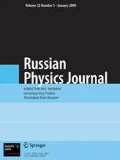In the CeO2, ThO2, and NpO2 crystals, the acoustic branches of the phonon spectra correspond predominantly to the vibrations of metal ions, and the optical branches correspond mainly to the vibrations of oxygen ones, due to a significant difference in the masses of these components of the compounds. An important crystallographic phenomenon is that metal and oxygen are located in sublattices corresponding to different Bravais types, which makes it possible to analyze vibrations in the corresponding Brillouin zones (BZ). This analysis was carried out by unfolding the optical branches of the phonon spectrum from the BZ of the crystal into the BZ of the oxygen sublattice. The number of optical branches in this BZ is half that in the BZ of the crystal. The effect of anharmonicity on the thermal broadening of the spectral lines of the phonon frequencies is studied in the approximation of two-phonon densities of states. For all three compounds, the calculated two-phonon densities of states represent two broad structured peaks. The temperature dependences of the upper peak show thermal broadening of the upper part of the optical branches and the lower peak shows thermal broadening of the low-energy optical and acoustic branches.
Similar content being viewed by others
References
M. Mogensen, N. M. Sammes, and G. A. Tompsett, Solid State Ion., 129, 63 (2000).
B. T. Willis, Proc. R. Soc. Lond. A, 274, 122 (1963).
B. T. Willis, Proc. R. Soc. Lond. A, 274, 134 (1963).
H. Serizawa, Y. Arai, M. Takano, and Y. Suzuki, J. Alloys Compounds, 282, 17 (1999).
H. Serizawa, Y. Arai, and Y. Suzuki, J. Nucl. Mater., 280, 99 (2000).
M. Yashima, D. Ishimura, Y. Yamaquchi, et al., Chan. Phys. Lett., 372, 784 (2003).
R. Caciuffo, G. H. Lander, J. C. Spirlet, et al., Solid State Commun., 64, 149 (1987).
R. Clausen, W. Hayes, M. T. Hutchings, et al., Rev. Phys. Appl., 19, 719 (1984).
S. Kern, J. Morris, C. K. Loong, et al., J. Appl. Phys., 63, 3598 (1988).
T. Sato and S. Tateyama, Phys. Rev. B, 26, 2257 (1982).
W. H. Weber, K. C. Hass, and J. R. McBride, Phys. Rev. B, 48, 178 (1993).
A. S. Poplavnoi and T. P. Fedorova, Fundament. Probl. Sovrem. Materialoved., (www.usmds.ru/joirual.html) 9, 324 (2012).
A. S. Poplavnoi and T. P. Fedorova, Izv. Vyssh. Uchebn. Zaved. Fiz., 54, No. 1/3, 182 (2011).
T. Gürel and R. Eryigit, Phys. Rev. B, 74, 014302-1–5 (2006).
B.-T. Wang, H. Shi, W.-D. Li, and P. Zhang, J. Nucl. Mater., 399, 181 (2010).
K. Kurosaki, M. Imamura, I. Sato, et al., J. Nucl. Technol., 41, 827 (2004).
V. Sobolev, J. Nucl. Mater., 344, 198 (2005).
A. S. Poplavnoi, Russ. Phys. J., 51, No. 7, 692 (2008).
A. S. Poplavnoi, T. P. Fedorova, and I. A. Fedorov, Fiz. Tverd. Tela, 59, 748 (2017).
A. S. Poplavnoi, Russ. Phys. J., 61, No. 9, 1726 (2018).
T. P. Kirienko and A. S. Poplavnoi, Russ. Phys. J., 53, No. 4, 325 (2010).
A. S. Poplavnoi, Kristallograf. Rep, 52, 597 (2007).
A. S. Poplavnoi, Russ. Phys. J., 49, No. 6, 574 (2006).
A. S. Poplavnoi, Kristallograf. Rep, 55, No. 2, 181 (2010).
K. Clausen, W. Hayes, J. E. MacDonald, et al., J. Chem. Soc., Faraday Trans. 2, 83, 1109 (1987).
T. P. Fedorova and A. S. Poplavnoi, Izv. Vyssh. Uchebn. Zaved. Fiz., 56, No. 8/3, 138 (2013).
K. Wakamura, Phys. Rev. B, 56, 11593 (1977).
K. Wakamura, Phys. Rev. B, 59, 3560 (1999).
R. P. Lowndes, J. Phys. C, 4, 3083 (1971).
K. Schmalzl, D. Strauch, and H. Scholer, Phys. Rev. B, 68, 144301 (2003).
Author information
Authors and Affiliations
Corresponding author
Additional information
Translated from Izvestiya Vysshikh Uchebnykh Zavedenii, Fizika, No. 1, pp. 50–57, January, 2021.
Rights and permissions
About this article
Cite this article
Zolotarev, M.L., Poplavnoi, A.S., Fedorova, T.P. et al. Features of Phonon Spectra of CeO2, ThO2, and NpO2 Crystals Due to the Structure of their Sublattices. Russ Phys J 64, 58–66 (2021). https://doi.org/10.1007/s11182-021-02300-x
Received:
Revised:
Published:
Issue Date:
DOI: https://doi.org/10.1007/s11182-021-02300-x




